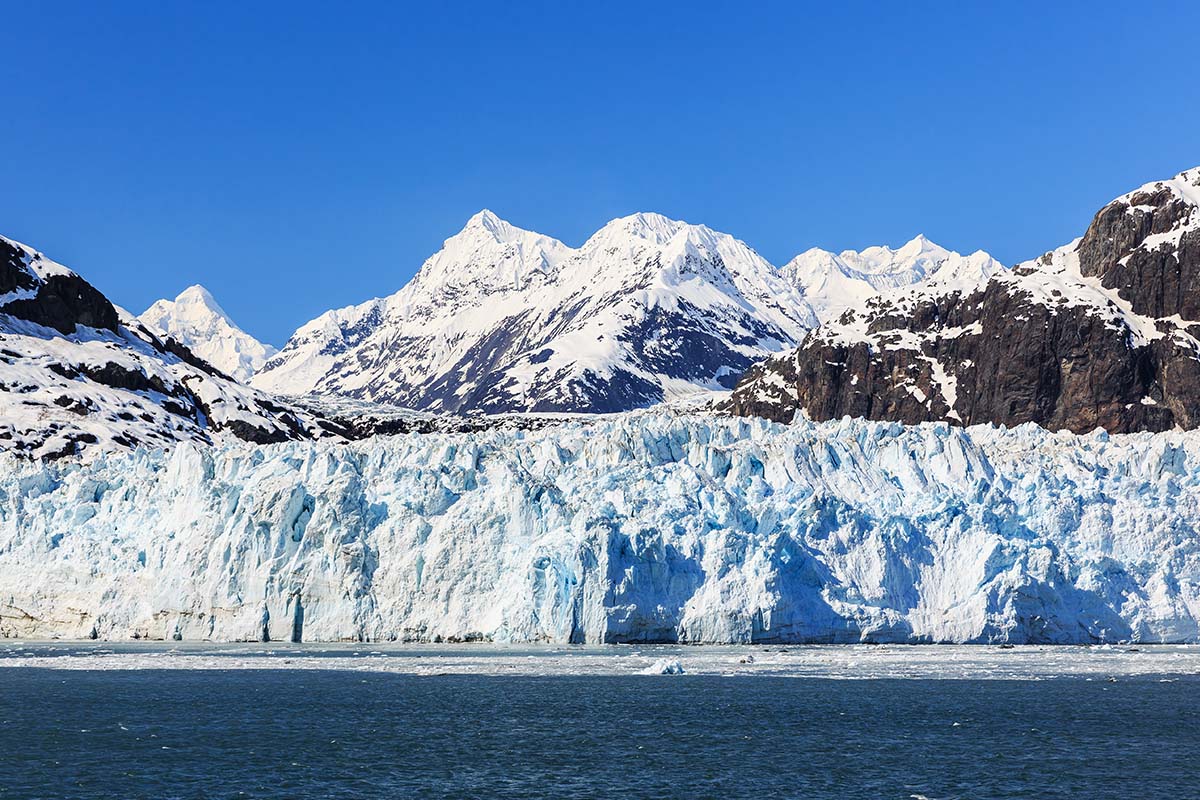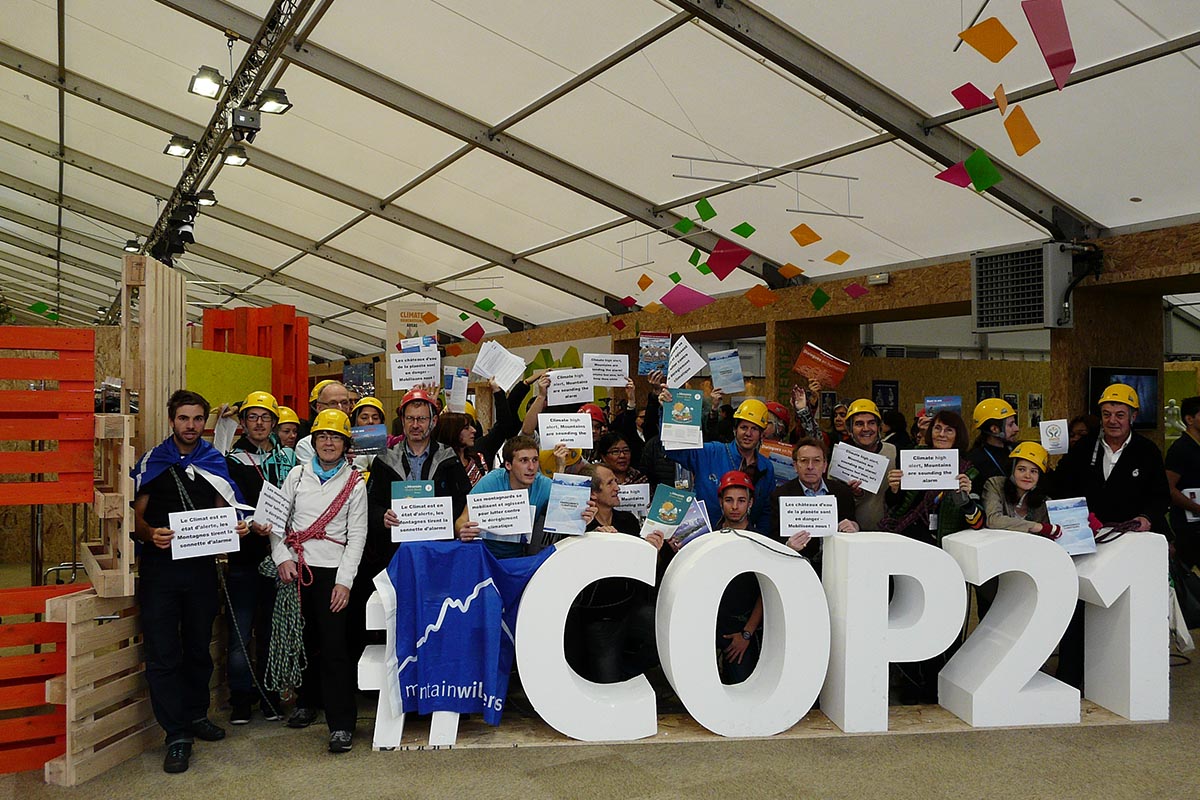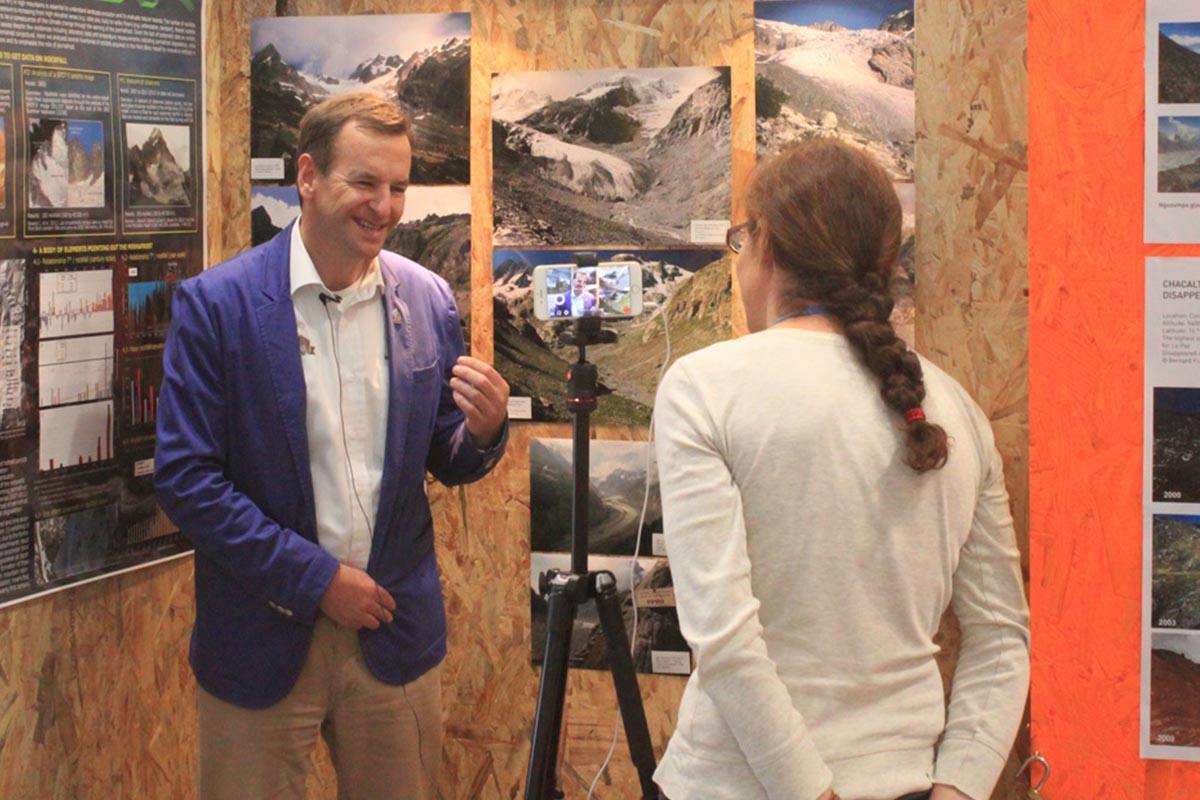
Mountains and Climate Change
Mountains feel blue, lets keep them white
Owing to their altitude, slope and orientation to the sun, mountain ecosystems are easily disrupted by variations in climate. Many scientists believe that the changes occurring in mountain ecosystems provide an early glimpse of what could come to pass in lowland environments. The mountains therefore are dually the areas most at risk and those most capable of providing answers to the dangers posed by climate change.
Over the past hundred years, mountain glaciers have continued to melt at an alarming and unprecedented rate creating a devastating impact on the plants, animals and mountain people in their vicinity. The negative effects of climate change though stretch beyond the immediate mountain environment. The mountains are global ‘water towers’ supplying lower lying areas including vast urban regions and populations.
This continued and relentless melting of mountain areas will alter discharge and flow patterns and the availability of water at key times in locations across the world. Food security and biodiversity will be challenged to its fullest. The emptying of water supplies will create a vast humanitarian crisis and political problems.
Furthermore, continued climate change in the mountains – regressing glaciers, melting snow layers, the raising of the permafrost height, the intensification of the erosion processes, the resulting changes in ecosystems of high altitude, the structural failures and physical disintegration of rocks – are likely to increase the rate of natural hazards and disasters.
As part of its wide scope of activities, the UIAA is fully engaged in mountain sustainability projects and the education about climate change, working closely, in the following areas:
• Promoting a sustainable mountain regions development, as well as the awareness and education of sustainable environmental practices through the annual UIAA Mountain Protection Award project.
• The preservation of the mountain environment in its natural state by supporting concrete actions taken by UIAA member federations and through mountain clean-up events organised through the UIAA Respect the Mountains programme.
• Encouraging the adoption and respect by all mountain stakeholders of the agreed international declarations, including the UIAA’s own guidelines and charters, in order to preserve mountain ecosystems and cultures.
• On a practical level, many UIAA member federations are already actively helping to reduce impact, notably by implementing and encouraging carbon offset programmes and in soft mobility schemes when travelling to mountain activities.

UIAA & The United Nations Framework Convention of Climate Change
COP21, Call from the Mountains
In 2015, the UIAA was present at COP21, the United Nations Framework Convention on Climate Change. Together with experts the UIAA proposed a ‘Declaration on Mountain Change for COP21, ensuring the vulnerability of mountains be recognised in the final Paris Accord’.
The Declaration was circulated to international organizations to be signed and to States to be promoted and supported in the negotiation sessions.
In addition to its work on the declaration, the UIAA were present on site managing the Call from the Mountains booth which provided international media, visitors and delegates with the opportunity to discuss the devastating effects of climate change in the mountains.
During an international media open day on 4 December, Frits Vrijlandt, President of the UIAA and Ang Tshering Sherpa (President of the Nepal Mountaineering Association) were available for interviews or informal discussions regarding the impact of climate change on mountain regions.

UIAA Quotes from COP21
Frits Vrijlandt, President of the UIAA:
“COP21 is the global conference on climate change which is the most important event and gathering of the heads of state and everybody involved in climate change. The role of the UIAA, as representative of entire mountaineering community, is to be the voice of the mountains.”
“It is crucial to raise awareness about the impact of climate change in the mountains. Most people who visit the mountains understand its beauty and enjoy spending time there without really realizing the extent of the glacial melting and the impact on our largest source of clean, drinking water. This is one of the many problems, and has a notable impact in developing countries. It will make drinking water more scarce, more expensive and on a humanitarian level escalade the difference between the rich and the poor.”
Ang Tshering Sherpa, President of the Nepal Mountaineering Association:
“Global climate change is impacting Nepal rather disproportionately compared to its size and its own meagre contribution of the global greenhouse gases. The Himalayas face temperature rise at double the rate of the global average. Its glaciers are retreating rapidly at an average rate of 30 meters every year, many of them forming into dangerous glacial lakes held back by frail moraine walls. Climate change is making rainfall patterns more irregular and it’s increasing the incidence of extreme droughts and floods in recent years.”
“Mountain communities are particularly vulnerable to natural hazards, which are a common feature of mountain environments. Earthquakes, landslides, avalanches, heavy rain and snowfall, floods and glacial lake outburst floods can destroy lives and livelihoods especially when infrastructure and settlements are built in hazardous areas.”
The full address by Mr Ang Tshering Sherpa regarding the current impact of climate change in Nepal can be viewed here.
The declarations related to climate change and the mountains can be viewed here (Declaration 1) and here (Declaration 2).
